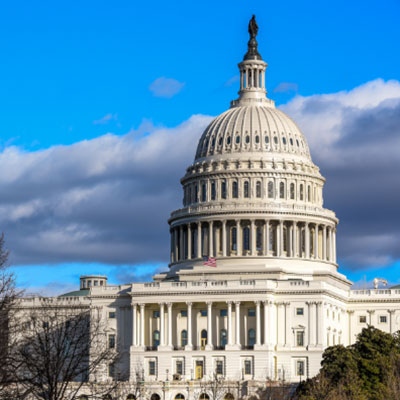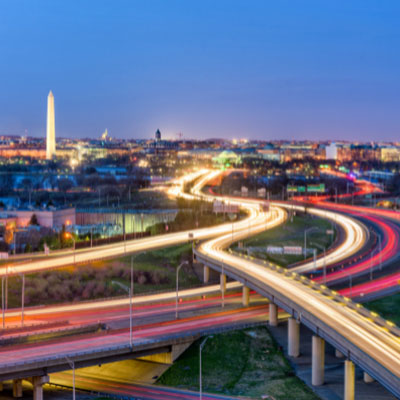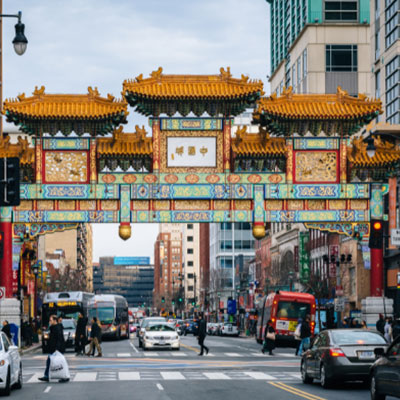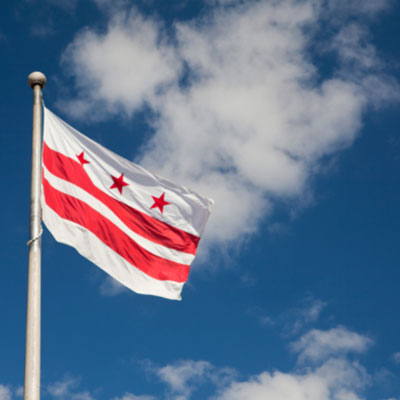- Home
- Amazing Blog
- Relocation
- Moving to Washington D.C.: Discover the Nation’s Capital, also known as the District!
Moving to Washington D.C.: Discover the Nation’s Capital, also known as the District!
We created this guide for moving to Washington D.C. to help those who are in their very early stages of researching where they’d like to move. So, what exactly do you need to know before moving to Washington D.C.?
We’ve compiled some of the most important items you should consider when making this big decision. According to 2020 Census data, despite not being a state, D.C. registered a massive 14.6% growth in population in the last decade. So, is D.C. the right place for you to move?
What You Need to Know about D.C.’s Geography

D.C. is located on the east bank of the Potomac River which forms its southwestern and southern border with Virginia, and it shares a land border with Maryland on its remining sides. Fun fact: the city sees over twenty million visitors a year!
If you love exploring the outdoors, D.C. and the surrounding areas may be the right place for you. In fact, with an area of just 68.34 square miles, D.C. packs a lot to do within its borders, including a few surprises.
The National Zoo, found in the Woodley Park neighborhood in northwest D.C., and Rock Creek Park, a large urban park that bisects the northwest quadrant of D.C., are just two of many outdoor options located within the district. A short drive away is Harper’s Ferry and Shenandoah National Park, both frequent escapes for outdoorsy residents.
The National Mall is really where outdoor D.C. shines. From the Lincoln Memorial across to the United States Capitol building and all the incredible Smithsonian museums and other national monuments in between, there is no shortage of places to stop along the almost two-mile path.
D.C.’s highest point, Fort Reno Park, in upper northwest D.C., stands at 409 ft tall. Not too much higher is D.C.’s lowest point, the Potomac River at the city’s border with Virginia. Although D.C. is mostly flat and covered in development, the district has 764 acres of parkland, about 19% of the city’s total area!
Moving to Washington D.C. Guide on the Weather in D.C.

D.C.’s humid subtropical climate has given it one of its less favored nicknames, “the Swamp.” It may surprise you to learn that winters in D.C. are usually cool with light snow, but that summers are hot and humid. This means that summer temperatures reach up into the high eighties and winter temperatures sometimes stay in the sixties!
The city has occasional dangers associated with blizzards, remnants of hurricanes, and extreme hot temperatures, which should be something to consider if you plan to make D.C. your home.
Moving to Washington D.C. Guide on Getting a Job in the District

If you’re looking for a place to grow your career, consider moving to D.C.! According to the city’s government’s website, at the time of authoring this article, the city of D.C. has seen a steady job growth rate compared to the rest of the United States. Moreover, in 2021, D.C. employers were adding jobs back quickly as compared to 2020!
D.C. continues to add more jobs, resulting in a steady unemployment rate of around 6.7%. Industries showing solid job gains included government services, professional services, and hospitality and tourism.
What’s the situation on buying alcohol in D.C.?

Who isn’t curious about how to toast moving to a new city! In D.C., a person must be twenty-one to buy or consume alcohol and it is illegal to drive with a blood alcohol level over 0.08%. Interestingly, packaged alcoholic beverages may be sold between 7:00 a.m. and midnight, any day of the week. Alcoholic beverages may be served in bars and restaurants between 8:00 a.m. and 2:00 a.m., Sunday through Thursday, and between 8:00 a.m. and 3:00 a.m., Friday and Saturday.
Fun fact: D.C. is the only place in the country where bars and restaurants can purchase alcohol directly from breweries/distilleries; every other state requires using a wholesaler!
What is there to do in D.C.?

Hopefully you like history! D.C.’s culture is reflected in its status as the capital of the United States and the presence of the federal government, its predominantly Black population, and its role as the largest city in the Chesapeake Bay region. In fact, it is home to over seventy unique museums, many of which are free for visitors. A few of our favorites are the world-famous Smithsonian Institution, the Hirschhorn Museum, and the beautiful Library of Congress.
Another choice for entertainment is to check out the many performing arts venues including the Kennedy Center and the Lincoln Theater. If you like sports, D.C. is also home to multiple successful men’s and women’s professional sports franchises. However, if you’re like us, we’re sure you’ll agree that eating in D.C. is the best. You’ll be impressed with the richness of the dining options all over the city.
Important Symbols in D.C.

The city of D.C. has tons of official and unofficial symbols; we’ve included a few of our favorites here. The first, and most important, is the city’s name. What is now D.C. was inhabited for thousands of years by various Native American tribes, including the Nacotchtank (Anacostan) and the Piscataway. When the area was selected as the nation’s capital, the city was named for George Washington, the first president of the United States, and the federal district is named after Columbia, a female personification of the nation!
The city’s fruit is the cherry, and the flower is the American Beauty rose. Another one of our favorite D.C. symbols is the city’s motto: the Justitia Omnibus, justice for all. Probably the most unexpected symbol is the city’s rock – Potomac Bluestone!
Lesser-Known FAQs About Moving to Washington D.C.
Q: What is the capital of D.C.?
A: The capital of D.C. is well, D.C.! D.C. is not actually a state – it is a federal district administered by a city council and a mayor with Congressional oversight. In the last decade, the city has become one of the fastest-growing cities in the United States by population. This has led to a real renaissance of neighborhood pride and identity. If you plan to move to D.C., you’ll lots of exciting options to choose from!
Q: How do D.C.’s public schools rank nationally?
A: According to a study by US News, D.C. public high schools rank 29/50 in a national breakdown tracking state-by-state high school performance. While education quality can vary widely depending on where in the city you live, this report takes the weighted average of the city’s high school performance into consideration. Don’t forget that D.C. is not a state and is home to a lot of private institutions, which contributes to that ranking, too!
Q: What kind of taxes can you expect to pay after moving to Washington D.C.?
A: D.C.’s status as a federal district means that it is not a state, and that means no traditional state taxes. Personal income tax is taxed at a rate of 4% on the first $10,000 of taxable income, 6% on taxable income between $10,001 and $40,000, 8.5% on taxable income between $60,001 and $350,000, and 8.95% on taxable income of $350,001 and above.
The general sales tax rate in D.C. is 6%. The average effective property tax rate across D.C. is a complicated formula, resulting in a lot of residents opting to rent rather than buy a property. There are also a lot of great neighborhoods around the district in Maryland and Virginia that offer more options while still providing easy transportation into the city for work and play!
Q: What’s it like to vote in D.C.?
A: D.C. is not a state, so there are no elections for governor, Senators, or Congressional representatives, but there are still plenty of important elections to participate in! To be eligible to vote in D.C., you must be a citizen of the U.S. and at least eighteen years old on the day of the election. You must also be a resident of D.C. for at least thirty days prior to Election Day. You are ineligible to vote if you are a felon serving a prison sentence, judged by a court of law to be legally incompetent, or a voting resident of another state or territory in the U.S.
Q: What are the rules for switching your driver’s license after moving to Washington D.C.?
A: If you have an out-of-state driver’s license, you’ll need to transfer it for a D.C. license once you have lived in-district for sixty consecutive days and are considered a resident. The D.C. Department of Motor Vehicles issues both federally compliant driver’s licenses and identification cards. Therefore, you need to find out what documents to collect and bring with you so you can secure either a D.C. driver’s license or identification card.
Q: When do you need to update your car plates after moving to Washington D.C.?
A: You can transfer your plates in person at any D.C. Department of Motor Vehicles service center. You’ll need your vehicle’s existing registration, your vehicle title, a vehicle inspection certificate, proof of insurance, a D.C. driver’s license, and payment for applicable fees and taxes. Because of D.C.’s nearness to Maryland and Virginia, you may want to consider D.C.’s reciprocity agreement for vehicle tags if you decide to live outside the district. Don’t forget to cancel and surrender your license plates if you move out of the district!
Q: What’s it like driving in D.C.?
A: Like most big cities, the driving conditions in D.C. are very different during peak and off-peak times. D.C. ranked near the bottom for cities with the best drivers in America. Now, that doesn’t mean D.C. drivers are all terrible – it just means you need to be sure you pay attention!
Q: Is D.C. a walkable city?
A: Yes! D.C. has a very developed public transportation system, the Washington Metropolitan Area Transit Authority (WMATA), as well as lots of paved sidewalks. There are even safe bike lines that share the road allowing you an alternative method to get around.
Is D.C. the Right Place for You to Move?

For those of you looking for lots to do, and who enjoy living in a place with a rich history, D.C. may be the right fit for you. The beautiful architecture of D.C., low taxes, and growing economy all lend themselves into making life great in the district. However, blizzards, extreme temperatures and middle of the pack schools prove that while exceptional, D.C. isn’t perfect.



